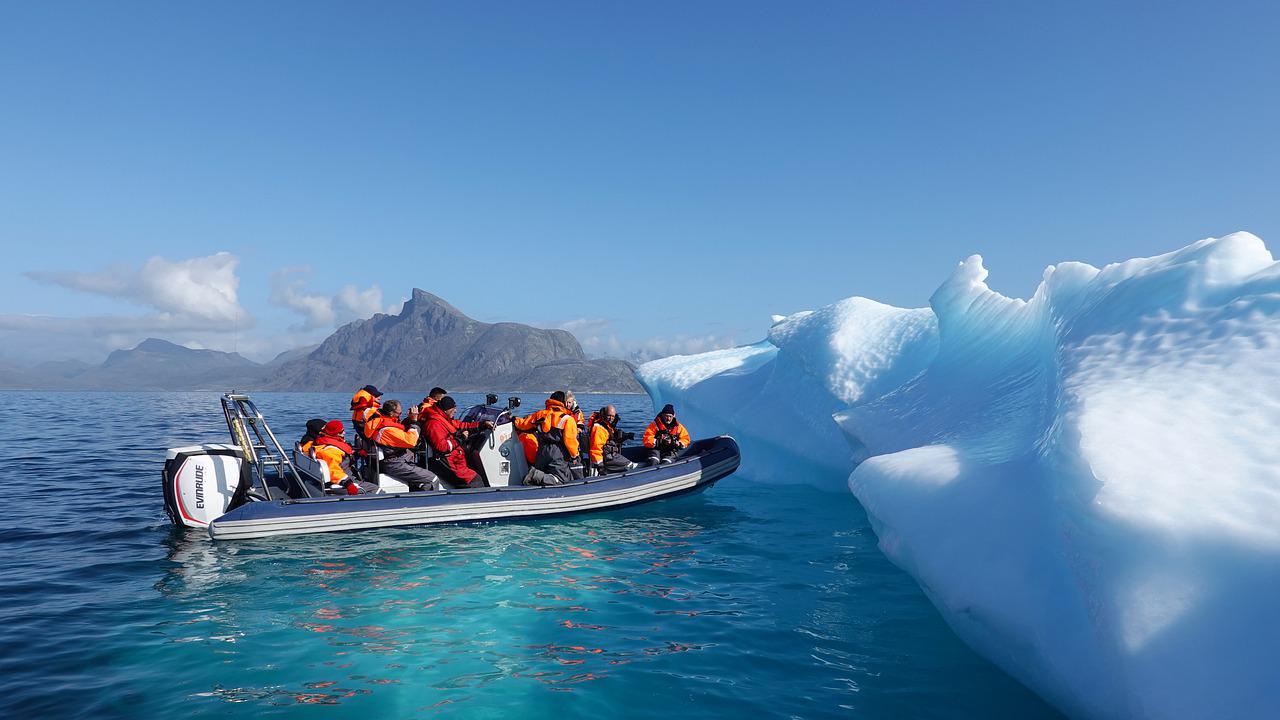CLIMATEWIRE | Ominous clouds rippled overhead, and scientist Jason Box raced to reach shelter before the rain hit.
Box, a glaciologist with the Geological Survey of Denmark and Greenland, had been camping with colleagues on the Greenland ice sheet last Friday when the weather began to turn.
As the team rushed to get off the ice, Box was struck by how warm the air felt on his face. It reminded him of hot Chinook winds that sweep through Colorado in the wintertime, melting snow and ice in their path.
He was right to find it foreboding. Over the next few days, the warm weather triggered a major melting episode in Greenland — a stunning event for September, which typically marks the end of the ice sheet’s melt season.
During the episode’s peak Saturday, around 12 billion tons of ice melted and ran off into the sea. Scientists estimate that more than 200,000 square miles of the ice sheet — an area bigger than California — were affected by the melting.
According to Xavier Fettweis, a climate scientist at the University of Liège in Belgium, the episode likely ranks among Greenland’s top 10 highest runoff events. And it’s likely the strongest September melt event on record.
Seeing such a strong melt event so late in the year, Fettweis added in an email, is “exceptional.”
The melting Greenland ice sheet is a top concern for climate scientists, and for human society as a whole, as the Earth warms. Greenland currently pours about 250 billion tons of ice into the ocean each year, in the form of both crumbling glaciers and surface melting. It’s the planet’s top contributor to rising sea levels.
Summer is Greenland’s main melting season. When ice melts at the surface, some of the liquid water trickles back into the porous snow on top of the ice sheet, where it refreezes. But some of it runs into the ocean, where it adds to rising seas. These runoff events are a major preoccupation for scientists keeping an eye on sea levels.
Big melting events tend to exacerbate the runoff problem — beyond the problem of additional liquid. Past a certain point, porous snow fills up and there isn’t space for any more liquid water to trickle in.
And late-season melt events can prime the ice sheet for more runoff the following summer, Fettweis warned. With winter approaching, the liquid water refreezes faster and forms hard lenses on the surface of the ice sheet. These lenses can make it more difficult for next year’s meltwater to penetrate the surface, forcing it to run off into the ocean instead.
This year’s melt season had been relatively modest until the September episode. It was punctuated by a single “heat ripple” in July, according to the National Snow and Ice Data Center, which caused a moderate melt surge across the ice sheet.
But the ice sheet has seen some extraordinary melting in other recent summers. The 2019 season brought some of its strongest melting, and highest mass losses, on record (Climatewire, Aug. 2, 2019). And 2021 saw several extensive melt events in July and August.
During last year’s August event, scientists observed rain falling at Greenland’s Summit Station — a high-altitude research station located nearly 2 miles above sea level — for the first time in recorded history. Temperatures there rarely rise above freezing.
Scientists have warned these kinds of events may grow more frequent and more severe as the region keeps warming — increasing Greenland’s contributions to global sea-level rise.
Strong September melt events are still uncommon. But that may change in the coming years. According to Fettweis, studies suggest that Greenland’s melt season will lengthen in a warmer climate, and late-season events may happen more often.
The latest melting event appears to have slowed after peaking over the weekend. But the episode was immortalized by artist Mette Hansgaard, who had followed Box and the other scientists into the field for a few days to experience the ice sheet — and its ongoing response to climate change — for herself.
As plump raindrops began to fall from the sky last Friday, Hansgaard paused to capture the landscape on her canvas.
“It’s raining here, so every time the colors get wet, the colors start to run,” she said as she painted. “So the rain and the weather affects the painting the same way as the weather affects ice, in a way.”
Reprinted from E&E News with permission from POLITICO, LLC. Copyright 2022. E&E News provides essential news for energy and environment professionals.

